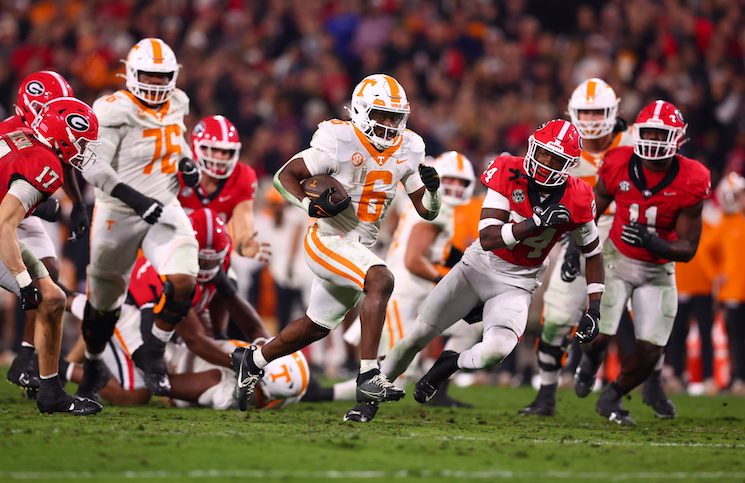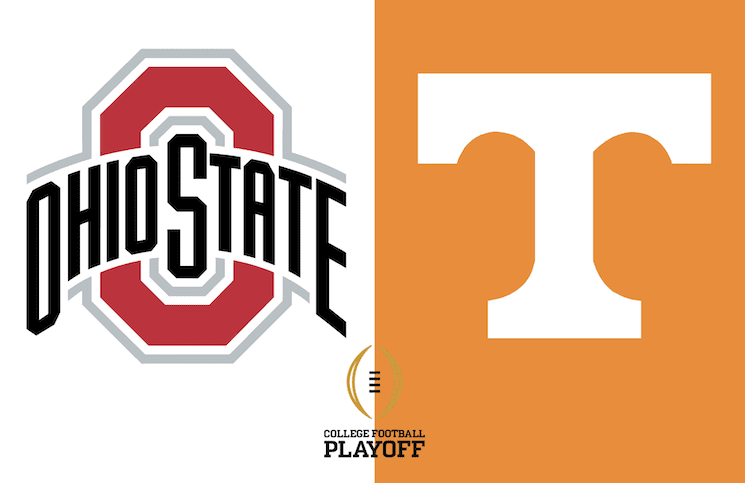
Tennessee controlled Thursday night’s season opener from the first kick, scoring 14 points before Bowling Green moved the chains for the first time.
A bad second quarter allowed Bowling Green to climb back in the game, but Tennessee put the Falcons to bed with the run game in the second half.
Here are four quick takeaways.
Vols Start Fast, Allow Bowling Green to Hang Around
Tennessee started like a team that was a 35-point favorite over an outmatched group of five team. The Vols forced a three-and-out on the first drive, quickly scored the first touchdown of the Josh Heupel era, forced another three-and-out and quickly marched 67 yards for another score.
The Vols looked dominant and like they might lead by five touchdowns at halftime. Instead, Tennessee’s offense sputtered and Bowling Green played ball control to stay within striking distance.
A holding on Darnell Wright stalled Tennessee’s third drive and then the Vols’ didn’t record a first down in the second quarter. The Vols had some chances in their limited possessions— a Jalin Hyatt drop stalled a Tennessee drive starting at its own 31-yard line.
Bowling Green’s offense wasn’t explosive in the second quarter but found ways to move the sticks with misdirection.
The Falcons went 70 yards and 48 yards on a pair of 11 play drives resulting in field goals.
A Tyler Baron sack on third-and-long on the second drive forced Heupel into the first game management decision of his tenure as the Vols’ head coach didn’t take a timeout with just under two minutes left in the half.
Instead, Tennessee’s offense took over at its own 41-yard line with 1:10 left, turning in its third three-and-out of the second quarter.
The Offense is Fast, Like Really Fast
We heard it over and over and over again this fall. Tennessee’s offense is going to be fast. Player after player talked about the struggle of keeping up in the Vols’ new offense, so I guess this bullet point shouldn’t come as a surprise.
But wow did Tennessee play fast in Josh Heupel’s first ever game.
Tennessee’s first drive of the game saw the Vols go 66 yards on 12 plays and 2:59. That’s an average of one play for every 15 seconds. On the Vols’ second drive, UT went 67 yards on eight plays and 2:01. That’s an average of one play for every 7.5 seconds.
All five of Tennessee’s touchdown drives were less than three minutes long.
Tennessee’s offense played with turbo speed, not substituting on either drive or much at all in the middle of drives throughout the game.
While we saw the positives of Tennessee playing with speed, the negative was on display too. The Vols offense was stagnant in the second quarter, allowing Bowling Green to control the ball for 12:22 in the second quarter.
Tennessee Turns to Run Game in the Second Half
Following an uninspiring second quarter, Heupel’s offense kept things on the ground coming out of the break.
After receiving the opening kickoff of the half, Tennessee ran it eight straight plays going 72 yards capped off by Milton’s second touchdown run of the game.
After Milton missed a wide open Cedric Tillman for a touchdown, the Vols went three-and-out on their second drive of the half.
Heupel turned to the running game again the following drive, as junior college transfer Tiyon Evans carried the ball four times for 39 yards including a 19-yard touchdown run.
The Vols imposed their will the way they needed to and could to put Bowling Green to bed. However, the Vols won’t be able to do that against the vast majority of their schedule.
The ineffectiveness of the passing game against a porous Bowling Green defense is one of the biggest storylines from the season opener.
Milton went nine-for-11 with 95 yards passing in the first quarter. The Michigan transfer completed just one of his next nine passes and went into the fourth quarter with just 10 completions.
Tiyon Evans ended the game with 104 second half rushing yards and Jabari Small recorded xx second half yards.
Odds and Ins on Tennessee’s Defense
Tennessee’s offense only subbed periodically while playing at an ultra fast speed, but the Vols’ defense played a plethora of bodies in the season opener.
The Vols’ defense is expected to be a weakness this season and the unit’s biggest flaw is its lack of depth. It showed up Thursday night.
With its first team linebackers— Juwan Mitchell and Jeremy Banks— and defensive line playing, Tennessee’s defense was dominant. Bowling Green went three-and-out on its first two drives of both the first and second half before Tennessee got some back ups involved.
With Solon Page III and Aaron Beasley in at linebacker, Bowling Green’s offense found some success— particularly with some misdirection.
On the other hand, Tennessee’s second team defensive line held its own with some solid play. The interior of Tennessee’s defensive line was fantastic against an inexperienced Bowling Green offensive line. Elijah Simmons, Ja’Quain Blakely and Omari Thomas were all involved in a handful of plays.
Thomas and Simmons each deflected passes including a Thomas’ deflection that led to a fourth down stop early in the third quarter.
The back end of Tennessee’s defense saw less substitutions. Backup cornerback Kenneth George Jr. earned plenty of reps backing up Warren Burrell and Alontae Taylor but safeties Jaylen McCollough and Trevon Flowers played almost exclusively.
Theo Jackson earned the vast majority of playing time at nickel where he was impressive in the season opener. That’s a spot Tennessee struggled at badly last season and improved play there would go a long way this fall.
Veteran defensive lineman Aubrey Soloman earned little playing time in the opener, sitting behind both Caleb Tremblay and Da’Jon Terry.
Terry had a nice Tennessee debut, recording a pair of tackles and a sack. With defensive end Byron Young out, Tyler Baron had a strong game, recording a sack and frequently pressuring Matt McDonald.



